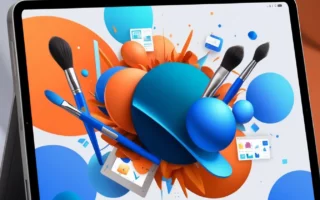We’ll break down the process of turning ideas into reality using graphic design, revealing how this powerful visual tool can bring your creations to life. We’ll cover the best techniques and strategies for creating impactful and innovative projects. If you’re interested in learning how to use graphic design to shape your ideas and communicate them effectively, keep reading. Let’s dive into this fascinating world and discover how graphic design can be the key to bringing your ideas to life.
Turning ideas into reality is an essential skill in graphic design.
This practice not only allows abstract concepts to become tangible.
But it also enables the creation of visual pieces that communicate effectively and engagingly.
Whether you're a beginner or a seasoned professional, understanding how to use graphic design to bring your ideas to life is key to achieving success.
To begin with, it is important to recognize that graphic design is a combination of art and technique.
It requires creativity, but also a strategic application of colors, shapes and typography.
By mastering these elements, you can turn ideas into reality in a way that resonates with your audience and achieves your desired goals.
The Power of Images in Visual Communication
Images are one of the most powerful components in the process of turning ideas into reality.
They have the ability to convey complex messages in an instant, making them essential in graphic design.
Choosing the right images can make the difference between a design that simply pleases and one that really communicates.
When turning ideas into reality, select images that complement and reinforce the central concept of the project.
High-quality, relevant images are crucial to capturing your audience’s attention and communicating your message clearly.
Also, consider the style of the images. Realistic photographs can evoke strong emotions, while illustrations can simplify complex ideas and add a touch of originality.
The way images are integrated into the design is also key.
Make sure they not only decorate, but also play an active role in communication.
When images and text work together harmoniously, the result is a cohesive design that effectively transforms ideas into reality.
Integrating Technology and Creativity
Technology is a powerful ally when it comes to transforming ideas into reality.
To get the most out of these tools, it's important to not only master the technical features, but also understand how to use them to express your creative vision.
For example, using layers in Photoshop allows you to experiment with different compositions without compromising your original design.
Vectorization tools in Illustrator enable the creation of scalable graphics, essential for logos and other visual identity elements.
By integrating technology and creativity, you can turn ideas into reality with greater accuracy and impact.
Additionally, technology facilitates experimentation, allowing you to test different approaches and refine your design until you achieve the desired result.
Continuous practice and exploration of available technological tools are essential to hone your skills and create designs that truly make a difference.
The Psychology Behind Graphic Design
Understanding the psychology of graphic design is essential to turning ideas into reality.
By understanding how people perceive and interpret visual elements, you can create designs that not only attract attention but also communicate your message effectively.
Color psychology, for example, plays a vital role in how your audience responds to your design.
Each color evokes different emotions and associations, and choosing the right palette can significantly influence the perception of your message.
When turning ideas into reality, use color to guide your audience's emotional state and reinforce the project's theme.
In addition to colors, the way the public reads and interprets typography is also important.
Rounder fonts tend to be perceived as more friendly and approachable, while angular fonts can convey seriousness and authority.
Understanding these nuances helps you create a design that resonates with your audience more deeply and effectively.
Visual composition is also influenced by psychology. Elements such as alignment, symmetry, and proximity affect how the audience interprets the hierarchy and importance of information in the design.
By considering these aspects, you can turn ideas into reality in a way that is intuitive and appealing to the viewer.
The Role of Feedback in the Creative Process
Receiving and applying feedback is a crucial step in turning ideas into reality in graphic design.
Constructive feedback can provide new perspectives, reveal areas for improvement, and guide the refinement of your design.
Incorporating this step into your creative process helps ensure that the end result meets your project expectations and goals.
When seeking feedback, it’s important to be open and receptive to criticism. Involve colleagues, clients, or mentors in the review process, and be willing to make adjustments based on their observations.
This dialogue can reveal insights you may not have considered, helping you turn ideas into reality more effectively.
Furthermore, feedback should not be seen as just correcting mistakes, but as an opportunity for growth.
Each review is a chance to hone your skills and improve the quality of your work.
Over time, you will learn to anticipate certain types of feedback and proactively apply them to your designs, making the process of turning ideas into reality increasingly fluid and efficient.
Conclusion
Transforming ideas into reality through graphic design is a skill that combines creativity, technique and a deep understanding of visual tools and concepts.
By following these guidelines and continuing to hone your skills, you will be well prepared to create designs that are not only visually appealing, but also communicate clearly and powerfully.
Remember that the process of turning ideas into reality is ongoing and involves practice, experimentation and constant learning.
Now that you have these tools and insights in hand, it’s time to apply what you’ve learned and turn your ideas into reality.
With dedication and passion for graphic design, you can create projects that leave a lasting mark and stand out in any context. Good luck and get to work!



